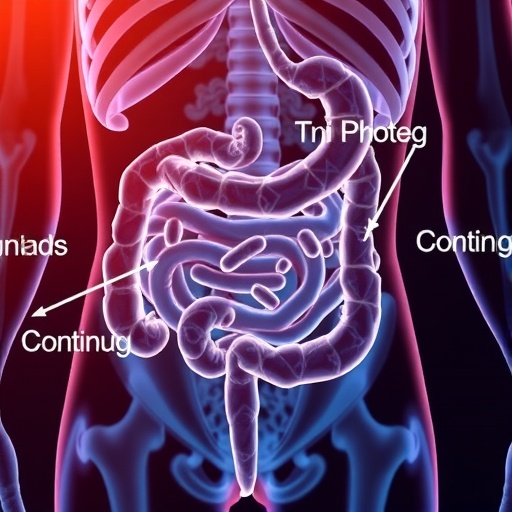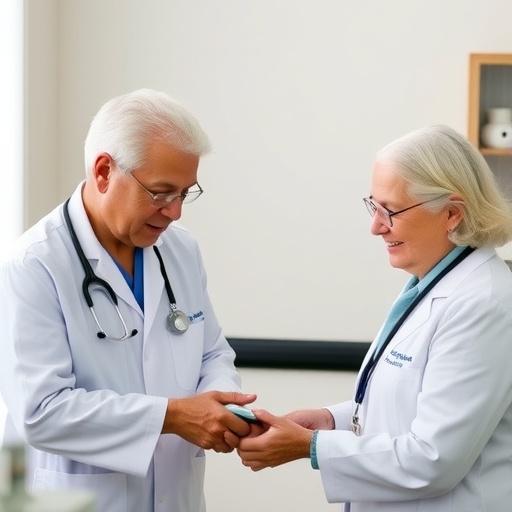In a landmark announcement that resonates profoundly within the regenerative medicine community and beyond, the International Society for Stem Cell Research (ISSCR) reveals the opening of registration and abstract submission for a landmark symposium commemorating two decades since the groundbreaking discovery of induced pluripotent stem cells (iPSCs). The ISSCR International Symposium, titled “20 Years of iPSC Discovery: A Celebration and Vision for the Future,” will convene in the historic city of Kyoto, Japan, from October 20 to 22, 2026. This event promises to be a seminal gathering, reflecting on the pivotal advancements since iPSC technology reshaped biological sciences and envisioning next-generation innovations on the horizon.
Crafted in close collaboration with the Center for iPS Cell Research and Application (CiRA) at Kyoto University—a nucleus for iPSC research—the symposium will be chaired by the eminent Shinya Yamanaka. Dr. Yamanaka was honored with the 2012 Nobel Prize in Physiology or Medicine alongside the late Sir John Gurdon for their transformative work demonstrating cellular reprogramming. Their discoveries revealed mature somatic cells could be induced back to a pluripotent and embryonic-like state, overcoming longstanding dogmas about cellular differentiation and opening floodgates to personalized, patient-specific regenerative therapies.
The symposium serves as more than a commemoration; it is a reflection on two decades of extraordinary progress. iPSCs have revolutionized our understanding of developmental biology and disease pathology by providing an unparalleled platform to derive virtually any cell type in vitro. This capacity has spurred innovations in disease modeling—offering researchers vital insights into Parkinson’s disease, Alzheimer’s, cardiovascular anomalies, and rare genetic disorders—transforming approaches to drug discovery and therapeutic development. The symposium sets the stage to discuss how these advances are poised for translation into clinical and industrial applications.
Global leaders in stem cell research will converge in Kyoto, representing a spectrum of expertise ranging from molecular mechanisms underlying iPSC biology to maturation and differentiation techniques. The assembly underscores the cross-disciplinary nature of modern stem cell science, integrating bioengineering, clinical applications, and emerging technologies. Attendees will gain access to the latest data streams, experimental methodologies, and conceptual frameworks that drive the field towards improved efficiency, safety, and scalability of iPSC-based therapies.
Foremost scientists including Yasuhiro Takashima from CiRA, Nissim Benvenisty from The Hebrew University, and Maike Sander of the Max Delbrück Center will delve into the intricate molecular and cellular underpinnings of iPSC biology. Their work explores epigenetic remodeling, transcriptional networks, and signaling pathways critical for reprogramming cells and maintaining pluripotency. Such foundational knowledge is crucial for overcoming challenges related to cell identity stability and variability, which are pivotal for therapeutic reliability.
The symposium will also provide a platform to dissect the nuances of iPSC differentiation and maturation. Researchers like Karl R. Koehler from Boston Children’s Hospital and Elizabeth Ng from the Novo Nordisk Foundation Center will present breakthroughs on guiding iPSCs into specialized cell types with enhanced functionality—essential for disease modeling and regenerative applications. This includes the generation of organoids and complex tissue structures that recapitulate human physiology more accurately than traditional models, opening novel avenues for drug screening and developmental studies.
Clinical translation remains a defining theme of the event. Experts such as Masayo Takahashi and Bob Valamehr will share insights into ongoing clinical trials and cell therapy products derived from iPSCs. These cutting-edge applications highlight strides toward treating degenerative eye diseases, neurological conditions, and various forms of organ failure. Discussions on regulatory frameworks, ethical considerations, and manufacturing standards will contextualize these therapies’ move from bench to bedside.
Bioengineering innovations will take center stage, showcasing how technological advancements in scaffolding, microfluidics, and bioprinting are enhancing the fidelity and scalability of iPSC-derived models. Orly Reiner from the Weizmann Institute and Philipp Wörsdörfer from the University of Würzburg will highlight how integrating bioengineering strategies can manipulate the cellular microenvironment, improve tissue architecture, and facilitate high-throughput screening—cornerstones for the next generation of stem cell-based research tools.
Adding another layer, sessions on enabling technologies will feature pioneers such as Azadeh Golipour of GC Therapeutics and Yoshiyuki Sankai of CYBERDYNE Inc. who are exploring cutting-edge methods like automation, artificial intelligence, and advanced imaging to refine iPSC workflows. These technologies not only amplify throughput but also enhance precision, enabling unprecedented dissection of cellular dynamics and accelerating discovery pipelines.
This symposium stands as a testament to the vibrant and rapidly evolving landscape of stem cell research, underscoring its impact across scientific disciplines and therapeutic arenas. By assembling a diverse range of voices—from pioneering scientists to industry leaders—the ISSCR is fostering a fertile environment for networking, collaboration, and ideation that will define the strategic trajectory of iPSC science for years to come.
Complementing this dynamic event, the peer-reviewed, open-access journal Stem Cell Reports will publish a special edition aligned with the symposium’s thematic focus, encapsulating the latest research findings and critical reviews. This effort ensures broader dissemination and engagement within the global scientific community, amplifying the symposium’s reach beyond the physical confines of Kyoto.
The ISSCR, with nearly 5,000 members from more than 80 countries, proudly positions itself at the forefront of stem cell science advocacy and promotion. By facilitating such seminal gatherings and scientific discourse, the society furthers its mission to advance excellence in stem cell research and translate these discoveries into tangible health benefits worldwide.
Registration and abstract submission are currently available, with deadlines set for July 29, 2026. This invitation extends to researchers, clinicians, and innovators driven by the promise of iPSCs to transform medicine and biology, welcoming them to participate in this scientific milestone.
The convergence of expertise, backed by a rigorous scientific agenda, reflects the ISSCR’s commitment to not only honor past achievements but also to chart an ambitious course toward future breakthroughs. As the regenerative medicine field advances, this symposium promises to be a crucible of knowledge, inspiration, and innovation, bridging discovery with clinical translation in unprecedented ways.
For more information about the symposium, registration details, and abstract submissions, interested parties are encouraged to visit the official ISSCR website. This event marks a pivotal chapter in the history of regenerative medicine, celebrating a discovery that has fundamentally transformed biomedical research and patient care.
Subject of Research: Induced Pluripotent Stem Cells (iPSCs) and their applications in regenerative medicine, disease modeling, and clinical therapies.
Article Title: 20 Years of iPSC Discovery: Charting the Future of Regenerative Medicine at ISSCR’s 2026 Kyoto Symposium
News Publication Date: Not specified in the text
Web References:
ISSCR International Symposium 2026: https://www.isscr.org/upcoming-programs/2026-kyoto-international-symposium/
Center for iPS Cell Research and Application (CiRA): https://www.cira.kyoto-u.ac.jp/e/
Japanese Society for Regenerative Medicine: https://en.jsrm.jp/
Stem Cell Reports journal: https://www.cell.com/stem-cell-reports/home
Keywords: Stem cell research, Translational medicine, Cell therapies, Stem cell therapy
Tags: abstract submission for iPSC researchcellular reprogramming advancementsCiRA collaborationinduced pluripotent stem cells celebrationiPSC discovery conferenceISSCR international symposiumKyoto Japan 2026next-generation regenerative therapiespersonalized medicine innovationsregenerative medicine symposiumShinya Yamanaka keynote speakertwo decades of iPSC technology





